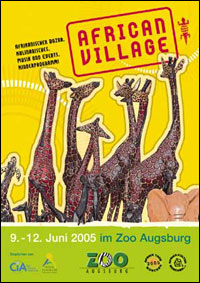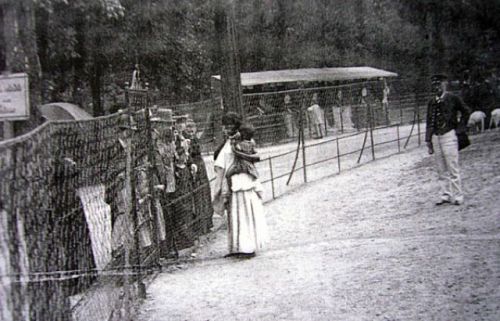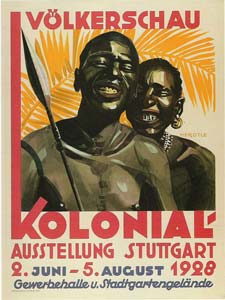 Human zoos (1500s- ), also known as ethnological exhibits, people shows (Völkerschau) or Negro villages, showed native peoples at zoos and fairs. They have been common in the West since the time of Columbus, butreached their height from the 1870s to the 1930s – back in the days of Joseph Conrad, Gauguin, minstrel shows and the birth of National Geographic.
Human zoos (1500s- ), also known as ethnological exhibits, people shows (Völkerschau) or Negro villages, showed native peoples at zoos and fairs. They have been common in the West since the time of Columbus, butreached their height from the 1870s to the 1930s – back in the days of Joseph Conrad, Gauguin, minstrel shows and the birth of National Geographic.
They showed people from:
- the Middle East,
- Africa,
- Sri Lanka,
- the Philippines,
- Java,
- New Guinea,
- the Pacific,
- the Americas and
- the Arctic.
They were especially common in
- Germany (huge),
- France,
- Britain and
- America.
Tens of millions saw them.
Examples:
- 1896: the Cincinnati Zoo showed Sioux Indians.
- 1899: “Savage South Africa” in Britain showed Zulus, complete with spears, shields and staged battles.
- 1904: the St Louis world’s fair showed a “parade of evolutionary progress” with Filipinos and American Indians ranked below whites and with Pygmies just above apes.
- 1906: the Bronx Zoo showed a Pygmy, Ota Benga, in the same cage as an orangutan.
Ever since Columbus natives brought back by sailors were shown to the public, especially at fairs. Few ever made it back home and many did not last long in disease-ridden Europe. A well-known example is Sarah Baartman of South Africa, who was shown in a cage in Britain and part of an animal show in Paris.
“Native villages” were built so white people could see how they lived. Montaigne reported one in Rouen, France in 1533 of Tupinamba Indians from Brazil. Such villages became especially common at zoos and world fairs starting in the 1870s.
To succeed as a native:
- Play to stereotype;
- Fit Western ideas of beauty – or go completely against them;
- Be at ease with audiences;
- Have a special skill, like ivory carving.
This favoured those who were artists or entertainers in their own land.
- Arabs were like in “Thousand and One Nights” from the 1300s.
- American Indians were like in the cowboy-and-Indian books of the time.
- South Sea Islanders were bare breasted and carefree – even though, as Gauguin discovered, that world was long gone if it ever was (but painted it anyway).
- Black Africans were shown as savage hunters, spears and all, just a step above wild animals – even though most Africans of the time were herders and farmers. One show was called “Gorilla Negroes”.
The Pygmies at the St Louis fair, on the other hand, liked to smoke cigars and wear top hats, which screwed up the show’s racist evolutionary ranking.
Some feared for the safety of white women. In both Victorian England and Nazi Germany, some opposed the shows out of fear of race mixing between black men and white women.
 At least as late as 2005 you could still see “African tribesmen” in grass skirts at a Western zoo (in Augsburg, Germany). Butsince the 1930s such things have become uncommon: film, and later television and cheap air travel, were able to give Westerners a much richer-seeming (but not always truer) experience of native peoples.
At least as late as 2005 you could still see “African tribesmen” in grass skirts at a Western zoo (in Augsburg, Germany). Butsince the 1930s such things have become uncommon: film, and later television and cheap air travel, were able to give Westerners a much richer-seeming (but not always truer) experience of native peoples.
See also:
- Sarah Baartman
- Ota Benga
- minstrel show
- BET Fallacy - the fallacy that people of colour are somehow in control of their image in the West, that white money does not call the tune.
- The Sioux today
- Iroquois
- stereotypes about Africa
- Notes on how not to write about Native Americans
- Golden Book Encyclopedia
- Darkest Austria
- black people according to the 1911 Encyclopaedia Britannica











No comments:
Post a Comment